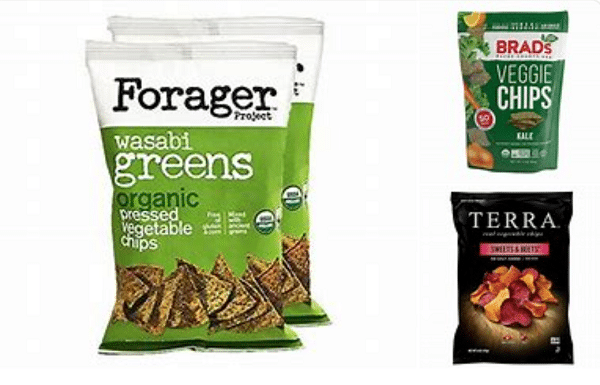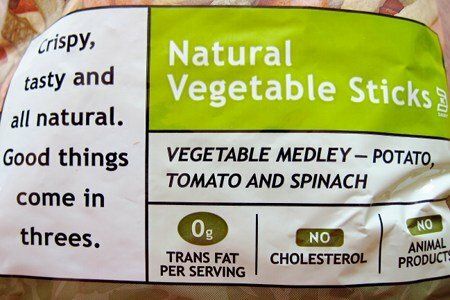Veggie chips have become a popular snack choice among those searching for healthier alternatives to traditional potato chips. As colorful and tasty as they are, many believe that veggie chips offer nutritional benefits that align with a conscious diet. But what really lies behind the vibrant hues and crunchy textures of these trendy snacks? This article aims to unravel the truth about veggie chips, examining their ingredients, health aspects, taste, and more. Keep reading to explore the world of veggie chips and discover whether they live up to their healthy reputation.
Contents
The Concept Of Veggie Chips

The term “veggie chips” might conjure images of thinly sliced vegetables crisped to perfection, but the reality is often more complex. Veggie chips come in two main categories: those made from real vegetables and those that are simply flavored to taste like vegetables. Comparatively, traditional potato chips are made from potatoes, oil, and salt, but veggie chips may include a variety of vegetables or just imitate their flavors. This distinction lays the groundwork for a more nuanced understanding of what veggie chips really are.
Moreover, not all veggie chips are created equal. Some are packed with nutrients from whole vegetables, while others might be no healthier than ordinary chips. The wide range of products available in the market can lead to confusion for consumers looking for genuinely healthier options. It’s essential to recognize the differences and complexities to make informed decisions.
The Health Aspect

Despite the commonly held belief that veggie chips are a wholesome alternative to regular chips, the nutritional reality might be less promising. Though some veggie chips do contain vitamins and fiber from real vegetables, others may lack these nutrients entirely. Additives, preservatives, and how they are processed can diminish their nutritional value. A side-by-side comparison with regular chips might reveal surprising similarities in calorie, fat, and sodium content.
Furthermore, marketing plays a significant role in shaping perceptions. Packaging with images of fresh vegetables and claims like “all-natural” can mislead consumers into thinking they’re making a healthier choice. In some cases, a small serving of real vegetables might offer more nutritional benefits than a whole bag of veggie chips. This complex picture of health necessitates a closer look at what goes into making these crunchy snacks, which you’ll explore in the next section.
Ingredients And Processing

The process of making veggie chips involves slicing, drying, or frying the vegetables and adding flavors and seasonings. Depending on the brand and type, the ingredients list might include real vegetables or be filled with artificial flavors and colorings. Additionally, preservatives are often used to extend shelf life. These factors contribute to the final taste, texture, and nutritional profile of the product.
Interestingly, the choice of cooking method, such as baking versus frying, also affects the healthfulness of veggie chips. While baking might preserve more nutrients and reduce fat content, frying can lead to a loss of vitamins and an increase in unhealthy fats. The addition of artificial flavors and high levels of salt further muddies the perception of veggie chips as a “healthy” snack.
Taste And Texture

Veggie chips often stand out in the snack aisle due to their unique taste and texture. Unlike traditional potato chips, which have a fairly uniform flavor, veggie chips can be made from a variety of vegetables, each imparting its distinct taste. From the earthiness of beets to the sweetness of carrots, these flavors offer a unique snacking experience. The texture, too, can vary, with some veggie chips offering a robust crunch and others a more delicate crispness.
However, the taste and texture are not just determined by the choice of vegetables but also by the seasoning and processing methods. Some veggie chips are seasoned with exotic spices, herbs, or even nutritional supplements like vitamins, adding complexity to their flavor profile. The method of cooking, whether baked or fried, further influences the texture. Understanding these aspects allows consumers to choose veggie chips that suit their preferences, a choice that also implicates broader market trends.
Market Trends And Brands

The rise of health consciousness among consumers has led to the proliferation of veggie chip brands and varieties. Some brands focus on organic, non-GMO ingredients, while others appeal to specific dietary needs like gluten-free or vegan options. The popularity of veggie chips has even sparked innovations, such as chips made from legumes or ancient grains. This has created a highly competitive market where brands are continually striving to differentiate themselves.
In this competitive landscape, packaging and marketing strategies become paramount. Brightly colored bags with images of fresh vegetables and bold health claims capture consumers’ attention. Celebrity endorsements, collaborations with nutritionists, and clever advertising campaigns further fuel the demand for veggie chips. This complex interplay of market dynamics influences not only consumer choice but also the ecological impact of these products.
Environmental Impact

While the shift towards veggie chips might seem like a positive trend for health, the environmental impact of these products must also be considered. Packaging, often made of non-recyclable materials, contributes to waste. Additionally, the transportation and energy required to process and distribute veggie chips can leave a substantial carbon footprint, sometimes comparable to that of traditional chips. Environmental considerations even extend to sourcing, as growing and harvesting the vegetables used in these chips can have varying ecological implications.
However, brands that recognize the importance of environmental stewardship have begun to address these concerns. Initiatives include using recyclable packaging, reducing water and energy consumption in processing, and sourcing vegetables from sustainable farms. Some even support local agriculture to minimize transportation emissions. These actions represent a move toward a more responsible approach to snack production, a theme that also resonates in the area of dietary considerations.
Dietary Considerations

Oftentimes, you will see veggie chips marketed as suitable for various diets, including vegan, gluten-free, or low-carb lifestyles. This wide appeal adds to their popularity but can also lead to confusion among consumers. Not all veggie chips meet the criteria for these dietary labels, and hidden ingredients might conflict with specific nutritional needs. For example, certain flavorings might contain gluten, or their frying oils could be unsuitable for a vegan diet.
In navigating these complexities, reading labels and understanding ingredients becomes essential. Brands catering to specific dietary needs usually provide clear labeling and certifications to guide consumers. Additionally, allergen information is often highlighted to assist those with sensitivities or intolerances. These considerations reinforce the importance of being an informed consumer, making wise choices that align with individual health goals and preferences.
Marketing Strategies And Misleading Information

Marketing strategies for veggie chips are often sophisticated, capitalizing on the growing demand for healthier snack alternatives. Bright packaging, persuasive language, and strategic placement in stores are all tactics used to attract health-conscious consumers. Some brands may even emphasize certain buzzwords like “natural,” “organic,” or “low-fat,” which may not necessarily reflect the overall nutritional profile of the product. Understanding these marketing tactics is key to making informed decisions.
Unfortunately, not all marketing claims are straightforward, and some can be downright misleading. A product boasting “made with real vegetables” might still be predominantly composed of starches and artificial flavors. Claims of “no added sugars” may ignore unhealthy artificial sweeteners. These marketing nuances demonstrate the importance of looking beyond the front label and scrutinizing the ingredients list and nutrition facts. Being aware of these common marketing ploys can empower consumers to choose products that truly align with their health goals.
How To Choose The Right Veggie Chips

Choosing the right veggie chips involves more than just picking a flavor you like; it requires a careful examination of the product. Looking for certifications such as Non-GMO Project Verified or USDA Organic can be a good starting point. Additionally, understanding serving sizes and comparing nutritional values, like sodium and fat content, can help you identify a genuinely healthier option.
Equally important is recognizing and understanding the ingredients. Opting for products with a shorter ingredient list and familiar names can often lead to better choices. Avoiding artificial flavors, colors, and preservatives supports a cleaner diet. Reading online reviews, seeking recommendations, and trying various brands may also guide you toward products that suit both your taste preferences and health needs. Armed with these insights, consumers can enjoy the world of veggie chips responsibly.
Know The Truth About Veggie Chips!
The world of veggie chips is multifaceted, blending taste and nutrition with marketing and environmental considerations. While they offer a delightful alternative to traditional chips, their actual value depends on understanding what lies behind the colorful packaging. By recognizing marketing strategies, scrutinizing ingredients, and being mindful of dietary and ecological factors, consumers can make informed choices. Veggie chips can be a part of a healthy diet, but awareness and discernment are essential. As with any food choice, a balanced approach that considers the whole picture leads to the most satisfying and nourishing experience.


